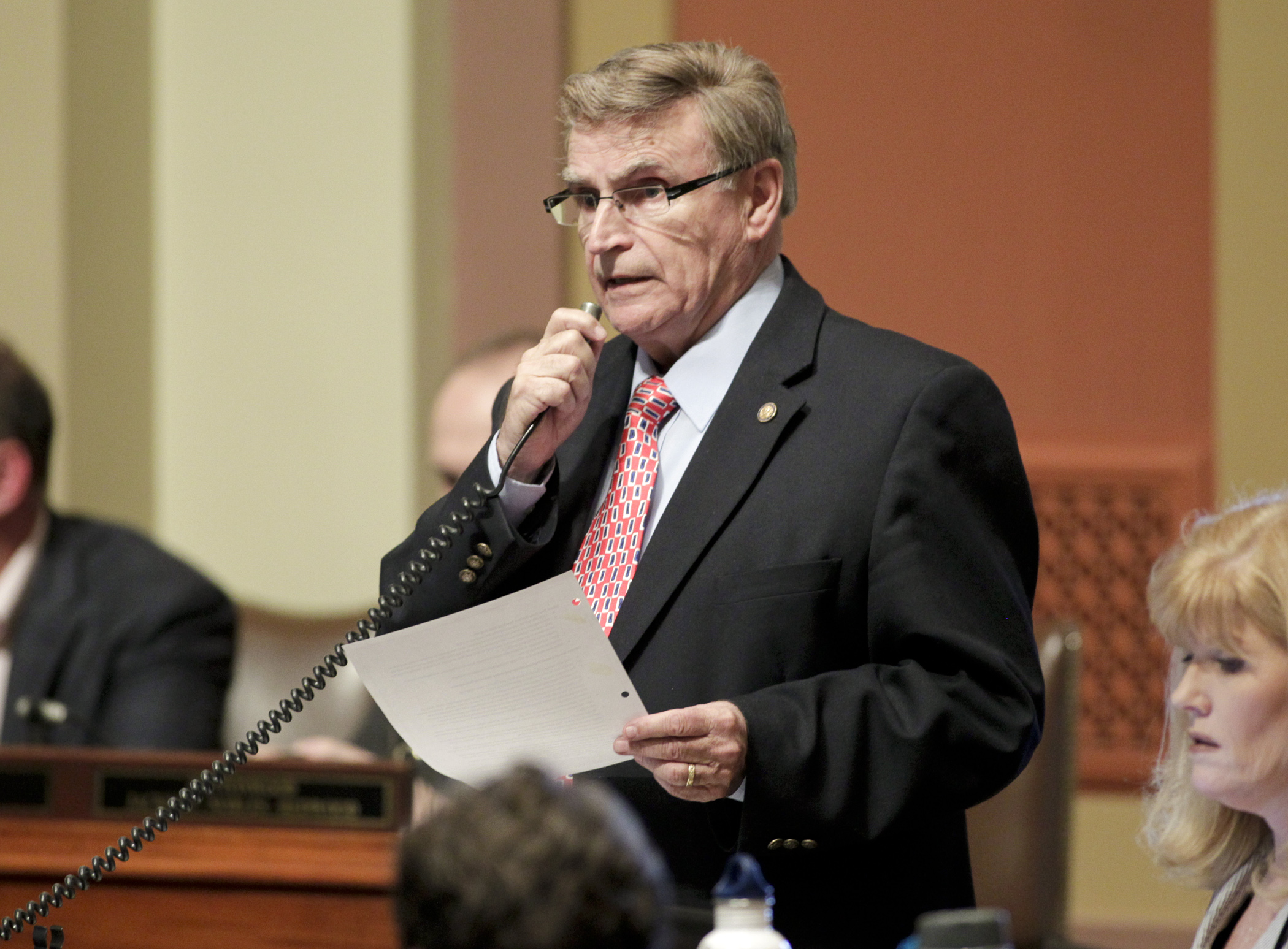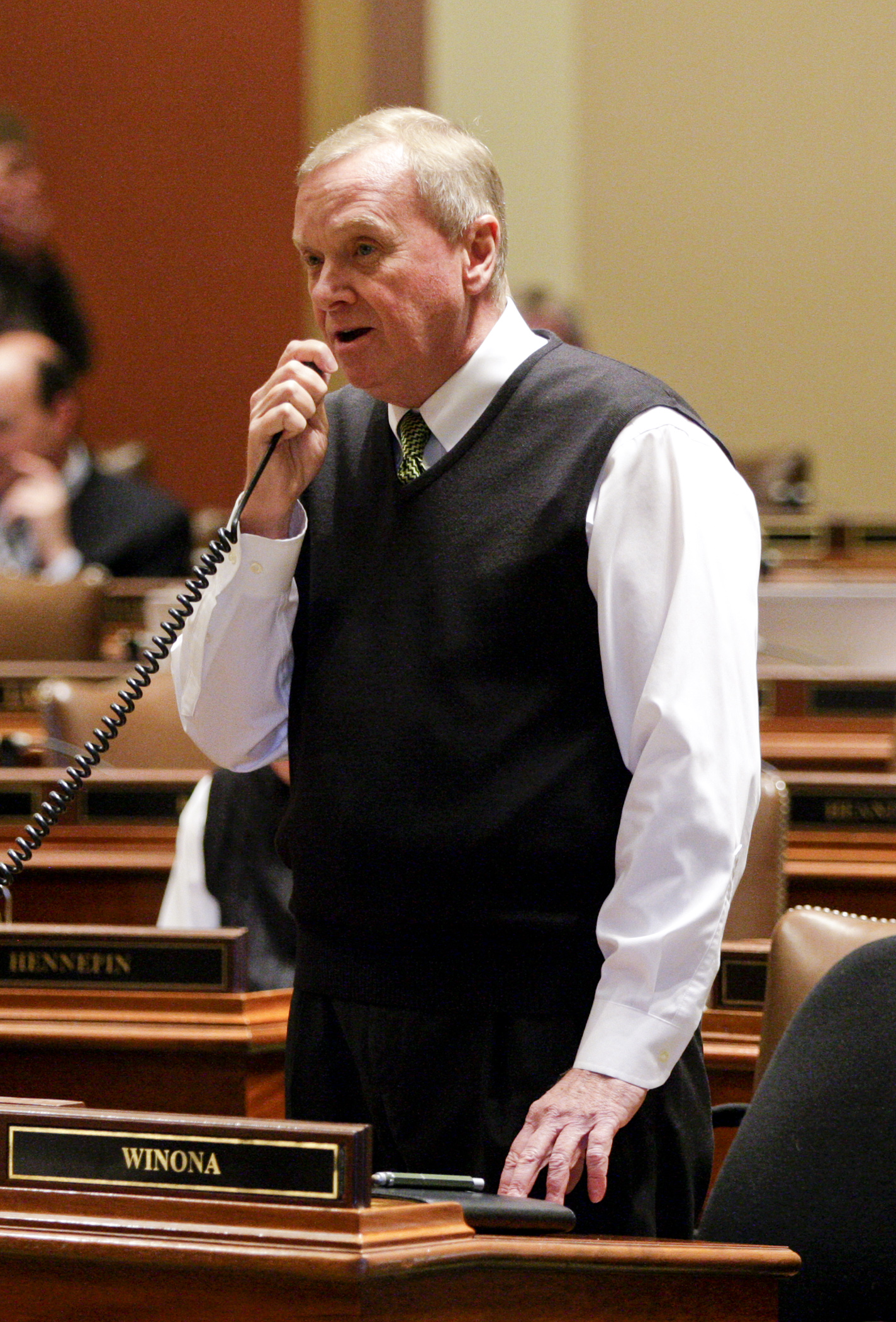House passes nearly $3 billion omnibus higher education bill

The House passed an omnibus higher education finance bill Monday that does not include additional funding requested by the University of Minnesota to cover the cost of a tuition freeze for its students. However, it would provide some tuition relief for students attending schools in the Minnesota State Colleges and Universities system.
It also contains a potpourri of proposed policy changes, most notably the development of a uniform campus sexual assault policy at all post-secondary institutions.
As amended to include the House language, HF845/SF5* would provide $2.95 billion for higher education in the 2016-17 biennium to be apportioned to the university, MnSCU and the Officer of Higher Education.
Following the 72-55 vote, it now returns to the Senate where Sen. Terri Bonoff (DFL-Minnetonka) is the sponsor. A conference committee is expected to work out the differences.
Sponsored by Rep. Bud Nornes (R-Fergus Falls), the House bill would increase higher education appropriations over the next two years by nearly $56.8 million compared to the Senate’s $205 million target and Gov. Mark Dayton’s $288.4 million proposal.
“There is no denying that this bill will lower the student debt, will better prepare students to be better career ready and will increase and improve the quality and safety on our campuses,” said Rep. Joe McDonald (R-Delano).
 Rep. Gene Pelowski Jr. makes closing comments on the omnibus higher education policy and finance bill during April 27 debate on the House Floor. Photo by Paul Battaglia
Rep. Gene Pelowski Jr. makes closing comments on the omnibus higher education policy and finance bill during April 27 debate on the House Floor. Photo by Paul BattagliaUnder the bill, MnSCU would see a $105.31 million increase in state support, which is short of the system’s request of $142 million that Chancellor Steven Rosenstone previously said was necessary to cover inflationary costs for a systemwide tuition freeze. Instead, the additional funds would cover a tuition freeze in 2016 and a 1 percent tuition reduction for all students at two-year state colleges in 2017. Students at four-year MnSCU schools would see a tuition freeze in the second year of the biennium only.
The university has requested a state funding increase of $148.2 million for the 2016-17 biennium, with about $65 million dedicated for a tuition freeze. Much of that increase, university officials have said, would help offset inflationary increases, much needed technology upgrades and the university’s commitment to recruit and retain a world-class roster of faculty and staff.
However, the bill contains just $2.9 million in new dollars for the university: $1.5 million to reinstate and support the agricultural education program and to enhance the health science program at the Crookston campus and $1.4 million in a Morris campus renovations and improvements.
Should appropriations for the requested tuition freeze be left out of the final bill, University President Eric Kaler has said students could expect a tuition increase in the amount of 2 percent to 3 percent.
While several DFL legislators hammered provisions of the bill they say ignore the needs of the university and its students, Nornes called on the Board of Regents – some of whom were in attendance during the Floor debate – to do their part to stop the rising costs of tuition.
“I want the University of Minnesota to know, and its regents to know, that we are behind you and we want to do as much as we can for you,” Nornes said. “But at the same time, I want to ask the Board of Regents to do as much for the students as they can, and that if they do decide on a tuition increase, to make it as minimal as possible.”
Rep. Kim Norton (DFL-Rochester), who was among the many DFLers who opposed the bill because its appropriations “pick winners and losers” based on whether they attend a four-year university or a two-year college. “All of our students deserve to be treated equally and we have not done that with this bill.”
The lone amendment to be adopted was offered by Rep. Erin Murphy (DFL-St. Paul). It would amend language in the bill’s uniform campus sexual assault policy provision that would require student health service staff to “provide care to sexual assaults victims” in addition to screening patients for incidents of sexual assault.
Debate over state grant program
Provisions in the bill would also reallocate $53 million in an existing surplus in the Office of Higher Education’s state grant program into several other post-secondary grants. Legislators debated whether the bill’s appropriations would meet the financial needs of many students who continue to face rising costs to attend post-secondary institutions.
Rep. Ben Lien (DFL-Moorhead) said that instead of using the state grant surplus dollars to partially fund the MnSCU tuition freeze, the Legislature should leave the excess funds in place, increase individual awards to recipients and expand the prorated funding for all part-time students.
The bill would also:
- create a credit transferability program that would requires MnSCU to establish a policy implementing a transfer curriculum to facilitate the transfer of college credit;
- reform remedial course requirements at MnSCU schools;
- create a teacher shortage loan forgiveness program;
- require MNSCU officials —and request university leaders — develop a plan to encourage students to complete degrees, diplomas or certificates in their fields of study; and
- new transfer pathways to facilitate the transfer of students between associate and bachelor’s degree programs would be established.
Related Articles
Search Session Daily
Advanced Search OptionsPriority Dailies
Ways and Means Committee OKs proposed $512 million supplemental budget on party-line vote
By Mike Cook Meeting more needs or fiscal irresponsibility is one way to sum up the differences among the two parties on a supplemental spending package a year after a $72 billion state budg...
Meeting more needs or fiscal irresponsibility is one way to sum up the differences among the two parties on a supplemental spending package a year after a $72 billion state budg...
Minnesota’s projected budget surplus balloons to $3.7 billion, but fiscal pressure still looms
By Rob Hubbard Just as Minnesota has experienced a warmer winter than usual, so has the state’s budget outlook warmed over the past few months.
On Thursday, Minnesota Management and Budget...
Just as Minnesota has experienced a warmer winter than usual, so has the state’s budget outlook warmed over the past few months.
On Thursday, Minnesota Management and Budget...